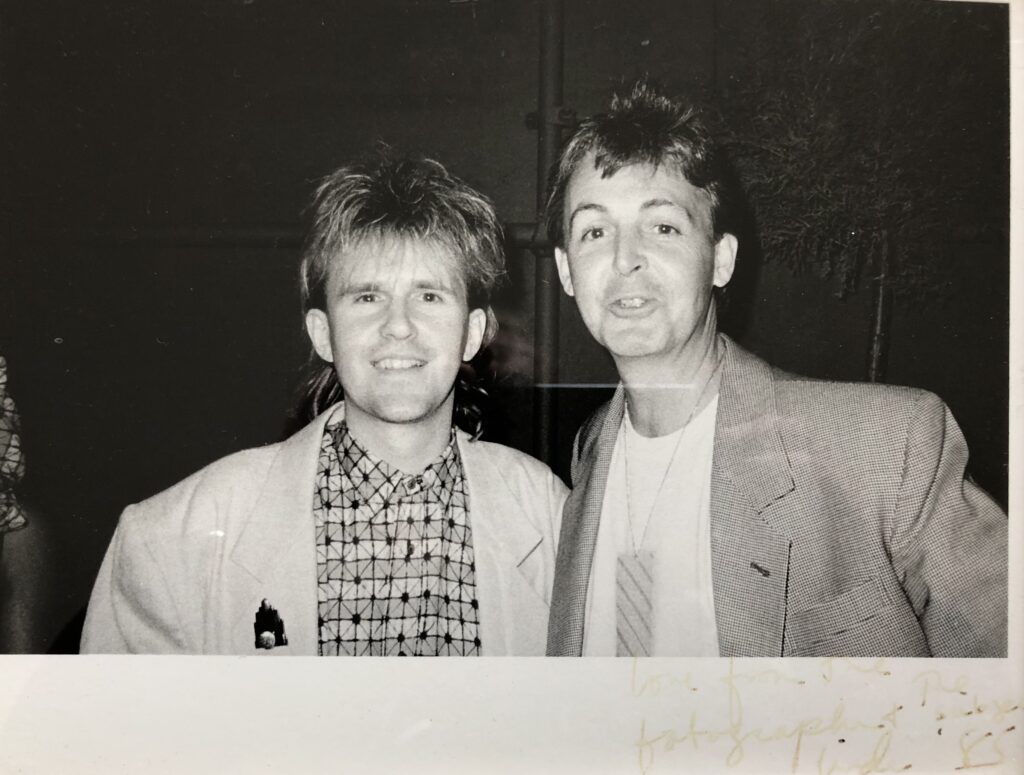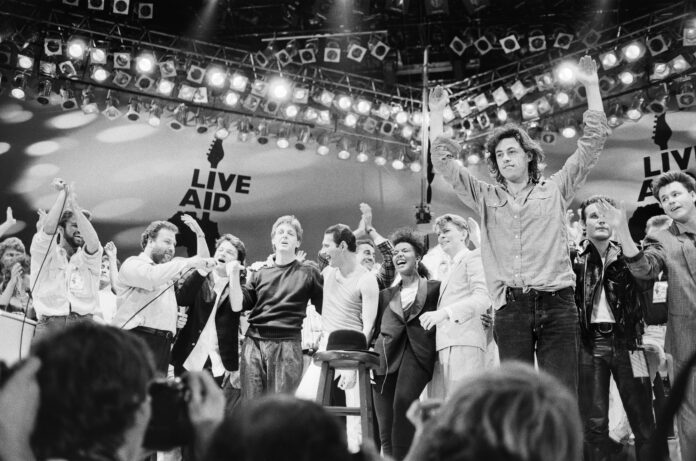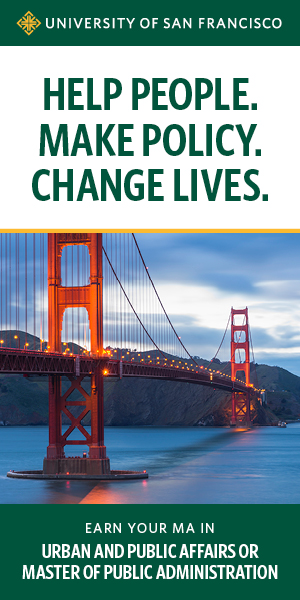When Live Aid took over the world on July 13, 1985, the numbers alone were staggering: nearly 2 billion people tuned in to watch dual mega-concerts unfold live from London’s Wembley Arena and Philadelphia’s JFK Stadium. Forty years later, BBC/CNN docuseries “Live Aid: When Rock ’n’ Roll Took On the World” (debuting Sun/13) is a timely reminder that music can still mean something.
The all-star Live Aid lineup—The Style Council, Paul Young, The Beach Boys, Queen, David Bowie, Joan Baez, Madonna, Kenny Loggins, Paul McCartney, Black Sabbath, REO Speedwagon, Crosby, Stills, & Nash, Judas Priest, Duran Duran, and more—spanned continents, genres, and generations.
Additional Live Aid performers were beamed in via satellite from countries like Australia, Japan, the Soviet Union, and West Germany, bringing the total number of performances worldwide to over 75—a staggering logistical feat in a pre-digital world, aimed at raising awareness and funds for the 1983-85 Ethiopian famine that had already taken hundreds of thousands of lives.
But behind the spectacle and superstars stood musicians Bob Geldof and Midge Ure at Wembley, and the late Bill Graham—Live Aid Philadelphia’s lead organizer, Bay Area legend, and one of the most influential concert promoters in music history.
Graham’s son David was there that day, and on the Live Aid 40th Anniversary, his memories remain vivid—of his father’s genius, the magnitude of the task, and the seismic sense of musical purpose.
“First of all, from Bill’s point of view, it was a logistical crowning achievement,” Graham tells 48 Hills. “Having 40-plus artists play on one stage in one day is truly epic. Especially since in 1985, rock ‘n’ roll production was still somewhat old-school.”
His father’s idea of putting the backline on a turntable to maintain a constant stream of music meant one band could load in while another performed, dramatically reducing set-change times. “That was key to the whole day,” says Graham.
But it wasn’t just the technology—it was the human choreography backstage that left its mark. According to Graham, at any given time, there were dozens of artists, some of whom had to share rooms, and everyone had to exit the room within earshot of when they were playing, which was not what most bands were used to.
He remembers the scale of the event—JFK Stadium itself being larger than most venues at the time with a seating capacity of approximately 100,000—and the wild card of it all: 20-year-old college student Bernard Watson, who had been busking outside the gates for a week, was invited by Bill Graham to open the show.
Graham also recalls the show’s unique local flavor, noting that Philadelphia, unlike London, had no Prince and Princess of Wales to offer. So, his father called on American royalty, Jack Nicholson, who agreed to come and spend the day acting as a master of ceremonies. “It added a little bit of sizzle to the whole thing—not that it was needed,” he says.
Matching the success of the London show was always going to be an uphill battle, says Graham, and his father felt that weight. He carried it even when dealing with frustrations, such as MTV’s broadcast coverage.
“When Bob Dylan was playing, they unceremoniously cut to something else—either a commercial or another segment—and [Bill Graham] lost his mind,” Graham says. “He couldn’t understand how, in that kind of arena, you could cut from Dylan.”
Despite such moments, the achievement loomed large. Graham would be very proud that the people from Bill Graham Productions were there, and that their work shone on a national and international stage.
That sense of responsibility extended beyond production to representation. “There was early pressure on Bill to book major Black artists, but it didn’t fully pan out,” David acknowledges.
Still, the Philadelphia show featured Run-DMC, Patti LaBelle, Ashford & Simpson, The Temptations, and the Four Tops. “I think that was part of Bill’s response,” says Graham. “Philadelphia is a very proud music town, and Bill responded to that criticism.”
Though some questioned the lineup at the time, Graham saw the inclusivity as something real and tangible. “Philadelphia felt more real to me than London,” he says. “The London show was very polished. Philadelphia had a distinct, gritty energy.”
In Detroit, Lawrence Payton Jr. (son of late Four Tops member Lawrence Payton) felt that energy ripple through his aunt’s backyard. “It was like the gathering of the troops,” he tells 48 Hills, remembering how the Four Tops prepared for their Live Aid performance. “It was a humanitarian event.”
There was no sound check; only a quick line check was performed, and early on, lead singer Levi Stubbs’ mic wasn’t emitting sound. But that soon changed. “When they got that sound straight, it was amazing,” says Payton Jr. ”Levi was hitting the big notes and then hit even bigger notes because the members knew the magnitude of the moment and were ready to step into it.”
As Payton’s son and a member of the group himself since 2005, he saw it as a moment of cultural validation. “Motown music was revolutionary, but also positive,” he says. “It became the soundtrack for the Baby Boomers. It wasn’t just Black music. It was our music.”

Meanwhile, British synth-pop star Howard Jones was taking a lone walk onto the Wembley stage. “I wanted to support what Bob Geldof and Midge Ure were doing,” he tells 48 Hills.
Having missed out on Band Aid, the genre-spanning super-group behind charitable single “Do They Know It’s Christmas?,” Jones had asked his manager to lobby for a slot at Live Aid. “The ‘80s were known as a very self-interested decade, but Live Aid was the complete opposite. So I chose to perform ‘Hide and Seek,’ which is a song about hope.”
He sang it solo, on piano, his band and equipment back in the US, where he was touring at the time. “It was the instrument with which I was most comfortable,” says Jones. “There was such pressure. You were in the company of the greatest artists on the planet. Two billion people were watching it on TV.”
The nerves didn’t let up until the crowd joined him. “It was the most euphoric feeling that you could have as a musician,” he says.
Backstage memories seemed to blend myth and magic, according to Jones, who remembers flying in with the members of Queen. “And this guy turned to me and said, ‘Hello, Howard,’” says Jones. “It was David Bowie. He said, ‘I hear you’re doing well in America.’”
Later, he found himself chatting with Paul and Linda McCartney about vegetarianism while in line for a photo shoot. Rehearsing with his vocalists backstage, Jones caught the attention of both Bowie and Pete Townshend. “They stood two meters away from us,” he says. “That was the most amazing audience of two people.”
Tom Bailey of the Thompson Twins found himself in a similarly surreal swirl, performing at JFK Stadium with a supergroup hastily assembled by Nile Rodgers, which included Steve Stevens, Madonna, and the backing band from “Late Night with David Letterman.” Bailey played his band’s best-known song at the time, “Hold Me Now,” and a cover of the Beatles’ “Revolution.”
“We had just recorded a version of ‘Revolution,’ which, although it is an ironic and even cynical take on widespread activism, seemed to have the kind of rebellious attitude that might wake us all up,” Bailey tells 48 Hills.
Because of relatively tight restrictions around stage loitering, says Bailey, he mostly hung out backstage in his dressing room. There, star sightings became a blur.
“I bumped into Madonna backstage and we took refuge in a small temporary building, which turned out to be the official photo studio,” he says. “I was amazed to suddenly meet three of The Rolling Stones, Bob Dylan, and Tina Turner. Somewhat starstruck, I reversed out of the rather cramped situation. Madonna stayed.”
Later that night, back in the hotel, Bailey played Scrabble with Nile Rodgers.
British comedian and Wembley event host Griff Rhys Jones remembers the legendary London line-up as the godfathers of rock ‘n’ roll.
“We thought some of these senior acts were pushing the boundaries of age-related rock ‘n’ roll then, in 1985,” Rhys Jones tells 48 Hills. “They were mostly ‘60s and ‘70s stars, and this was 10-20 years after their heyday. We made a joke about Status Quo not quite managing the stairs or something like that.
“We introduced Queen, of course. Quite honestly, they would have been nothing without us. Or maybe they would have managed somehow. But look at them now. Most of them are still legends, and some continue to tour. What a generation. Mick Jagger deserves a statue in the mall or at least a throne.”
Noting that his kids are overly impressed with their father emceeing a show of this caliber, he jokes: “I had to play the recording for my adult kids so that they could see that I was there. They’ve put me in a care home.”
Ure, who co-organized Live Aid with Geldof, remembers the chaos. “Harvey Goldsmith lost contact with ‘the shuttle,’” he says, before realizing it wasn’t a bus—but NASA’s space shuttle, which was supposed to beam in a message.
To avoid any performance mishaps, Ure’s Ultravox band chose four songs that required minimal technical setup due to the limited time available: “Reap the Wild Wind,” “Dancing With Tears In My Eyes,” “One Small Day,” and “Vienna.”
“The song choices were driven by which ones were the least likely to go wrong,” Ure tells 48 Hills.
The legacy of the event, he believes, is still unfolding. “Best ask the multitude of people who survived the famine in sub-Saharan Africa, because of the various records ‘Do They Know It’s Christmas?’ inspired, and the subsequent concerts, Live Aid, Live 8, etc., which helped to make caring cool,” he says.
Dame Claire Bertschinger embodied that legacy when her emotional 1984 BBC interview—describing her agonizing daily choice (as a frontline nurse) of which starving Ethiopian children to feed and which were too sick to save—compelled Geldof to act.
Her longtime friend Howard Jones recalls her saying at the time: “‘What are they doing a concert for? That’s not going to save anybody’s life.’” But after seeing the attention and money the historic event generated, she quickly changed her tune.
“‘Live Aid’ was the moment the world came together in compassion—proof that humanity can transcend their differences and unite to fight suffering with hope and peaceful action,” Bertschinger tells 48 Hills via email.
And through it all, David Graham sees the mark of his father. “He had a reputation for being loud, boisterous, even volatile—but he truly cared about people and was a very creative force,” says Graham.
Bill Graham didn’t just build stages—he built cultural blueprints. His 1975 SNACK (Students Need Athletics, Culture and Kicks) benefit, featuring Bob Dylan and The Band, Neil Young, the Grateful Dead, Jefferson Starship, Joan Baez, and Santana, drew 60,000 to Kezar Stadium to raise funds for San Francisco public schools—and became a precursor to Live Aid and other mega-charity concerts he later supported, including two Amnesty International tours and 1989’s Earthquake Relief Concert for victims of the Loma Prieta earthquake.
“It wasn’t just about sending money to a number,” Graham says. “It was real, cause-and-effect change. That’s how he operated.”
Even now, decades later, Graham continues his father’s legacy as a board member of the Bill Graham Memorial Foundation. “Remarkably, I’m still doing things on his behalf,” he says. “But it makes sense. Not only because of my name, but because I genuinely love rock ‘n’ roll.”
That love—and that legacy—come through in the new docuseries—and the Live Aid YouTube Channel will release the entire Live Aid concert here on the day of its debut, so new generations can experience the mega-concert.
As Graham puts it, “Bill had numerous issues that day, but it was still a considerable achievement.” Pulled together under immense logistical pressure, Live Aid became a defining example of how local action could drive global awareness and what music and media could accomplish when mobilized for a shared cause.





